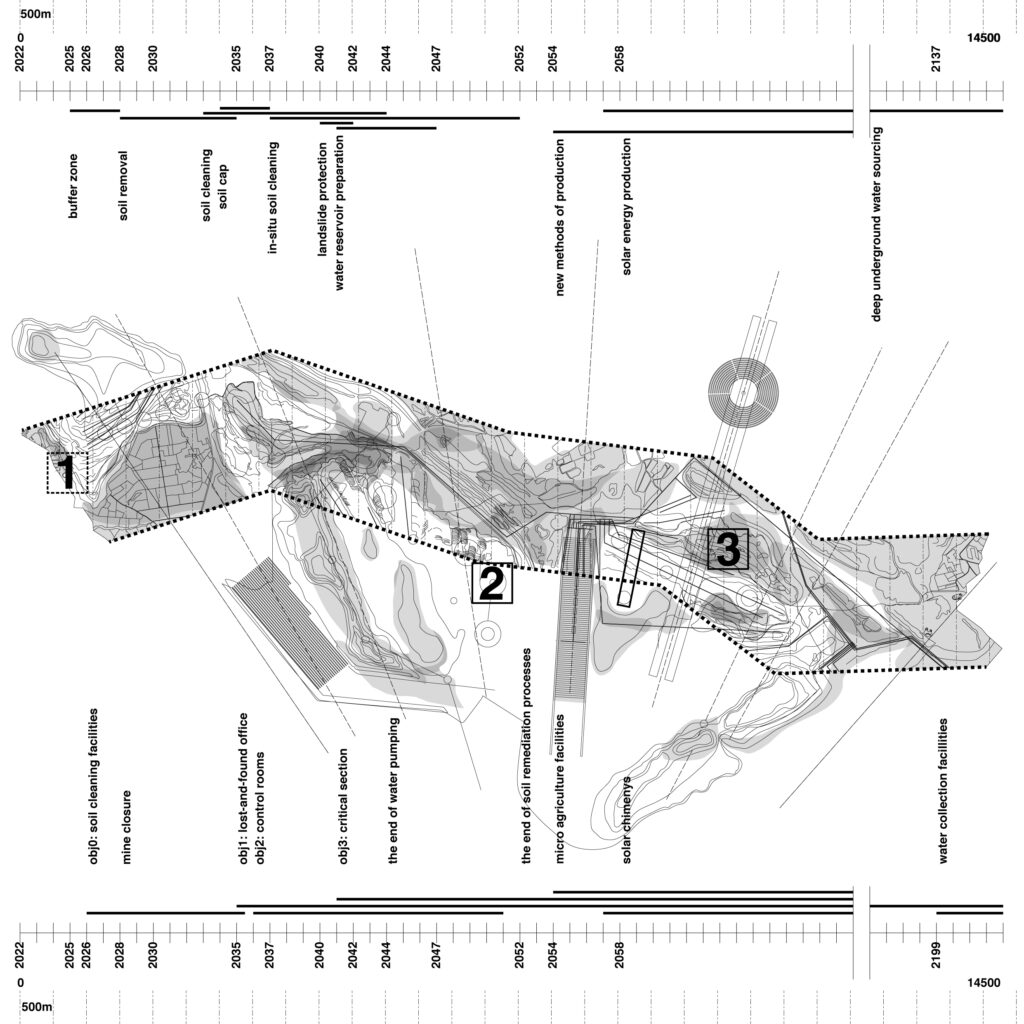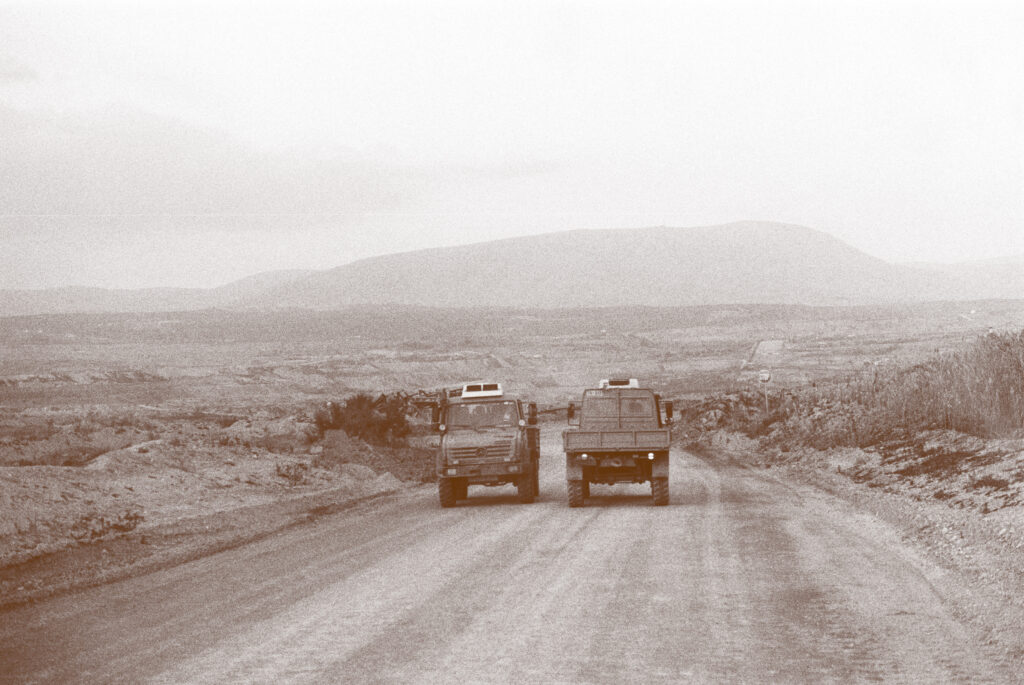66 MILLION YEARS
The project involves a comprehensive masterplan for the mine with a focus on halting its continuous decay and decline. While rooted in production, the current landscape must undergo a transformation towards a multifaceted public works system that bolsters the economy, transitioning into a polyfunctional infrastructure. This entails a process of reduction.
The initial phase involves excavating soil from critical, contaminated areas within the landscape, and establishing a buffer zone for soil reclamation. In the subsequent phase, specific soil sections will be sealed and treated on-site. Following this, areas prone to landslides will be secured, ensuring stability. Thereafter, the mine’s deepest recesses will be primed to serve as water reservoirs. Subsequently, portions of the landscape will be repurposed for agriculture, reminiscent of historical land use. In addition, the canal will evolve into the central axis of a verdant corridor, serving as a linear park. This transformation will foster conditions for fresh production zones that will, over time, redefine the entire territory with a renewed focus on non-profit-driven objectives.


To illustrate my examination, I’ve focused on a segment that traces the path of long-displaced villages. Presently, we observe the existing condition.
Before reaching closure, a segment of the landscape will transition into a buffer zone featuring soil purification facilities. This marks the initiation of soil decontamination and the inception of one of the proposed interventions.
Subsequently, other sections of the landscape will undergo soil flushing, accompanied by a separate intervention.
We will take measures to secure steep slopes against potential landslides, and the establishment of water reservoirs will create new ecosystems.
In due course, the landscape may evolve into an alternative energy production source or a hub for bio-industry. Alternatively, we may be compelled to shift our focus toward water sourcing or reclamation methods due to the escalating temperatures if our current measures prove inadequate.
I see the role of architecture within that context as acupunctural, highlighting certain moments as points of intensification. The project intervenes in a particular place at a specific moment as a first step, which suggests the new direction of the hinterland.

